
Copernical Team
Alien Machines in the Solar System: The Possibilities and Potential Origins
 In 2018, the scientists Adam Frank and Gavin Schmidt proposed the Silurian hypothesis. It considered the potential of finding ancient evidence in Earth's geologic record that a non-human industrial civilization could exist on Earth millions of years ago. But could any outcomes of the technogenic activities of such a civilization survive until present day? Irina K. Romanovskaya, who is a graduate
In 2018, the scientists Adam Frank and Gavin Schmidt proposed the Silurian hypothesis. It considered the potential of finding ancient evidence in Earth's geologic record that a non-human industrial civilization could exist on Earth millions of years ago. But could any outcomes of the technogenic activities of such a civilization survive until present day? Irina K. Romanovskaya, who is a graduate Possible hints of life found on distant planet - how excited should we be?
 Data from the James Webb Space Telescope (JWST) has shown that an exoplanet around a star in the constellation Leo has some of the chemical markers that, on Earth, are associated with living organisms. But these are vague indications. So how likely is it that this exoplanet harbours alien life?
Exoplanets are worlds that orbit stars other than the Sun. The planet in question is named K2-18
Data from the James Webb Space Telescope (JWST) has shown that an exoplanet around a star in the constellation Leo has some of the chemical markers that, on Earth, are associated with living organisms. But these are vague indications. So how likely is it that this exoplanet harbours alien life?
Exoplanets are worlds that orbit stars other than the Sun. The planet in question is named K2-18 JWST's first spectrum of a TRAPPIST-1 planet
 In a solar system called TRAPPIST-1, 40 light years from the sun, seven Earth-sized planets revolve around a cold star. Astronomers obtained new data from the James Webb Space Telescope (JWST) on TRAPPIST-1 b, the planet in the TRAPPIST-1 solar system closest to its star. These new observations offer insights into how its star can affect observations of exoplanets in the habitable zone of cool s
In a solar system called TRAPPIST-1, 40 light years from the sun, seven Earth-sized planets revolve around a cold star. Astronomers obtained new data from the James Webb Space Telescope (JWST) on TRAPPIST-1 b, the planet in the TRAPPIST-1 solar system closest to its star. These new observations offer insights into how its star can affect observations of exoplanets in the habitable zone of cool s The OSIRIS-REx sample canister lid is removed
 NASA scientists found black dust and debris on the avionics deck of the OSIRIS-REx science canister when the initial lid was removed today. The canister from the OSIRIS-REx sample return capsule was delivered to NASA's Johnson Space Center in Houston on Sept. 25 after landing in the Utah desert on Sept. 24.
Johnson houses the world's largest collection of astromaterials, and curation exper
NASA scientists found black dust and debris on the avionics deck of the OSIRIS-REx science canister when the initial lid was removed today. The canister from the OSIRIS-REx sample return capsule was delivered to NASA's Johnson Space Center in Houston on Sept. 25 after landing in the Utah desert on Sept. 24.
Johnson houses the world's largest collection of astromaterials, and curation exper Likely asteroid debris found upon opening of returned NASA probe
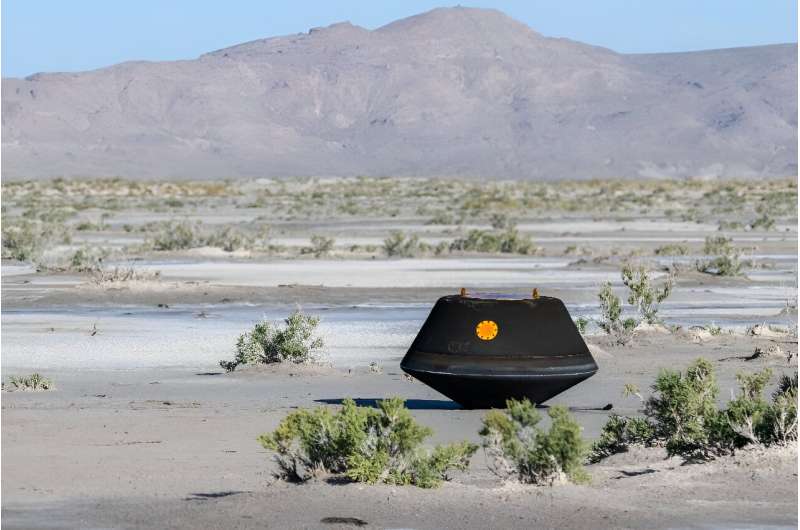
After a seven-year wait, NASA scientists on Tuesday finally pried open a space probe carrying the largest asteroid samples ever brought back to Earth, finding black debris.
Researchers "found black dust and debris on the avionics deck of the OSIRIS-REx science canister when the initial lid was removed today," the US space agency said, though without specifying whether they definitely belonged to the asteroid.
Scientists are eagerly awaiting researching the bulk of the sample, which will require "intricate disassembly" of the probe.
OSIRIS-REx launched in 2016, landing on the asteroid Bennu and collected roughly nine ounces (250 grams) of dust from its rocky surface.
Even that small amount, NASA has said, should "help us better understand the types of asteroids that could threaten Earth."
It ended its 3.86-billion-mile (6.21-billion-kilometer) journey after touching down in the desert in the western state of Utah on Sunday, following a high-stakes, fiery descent through Earth's atmosphere.
Listening to the radio on the far side of the moon
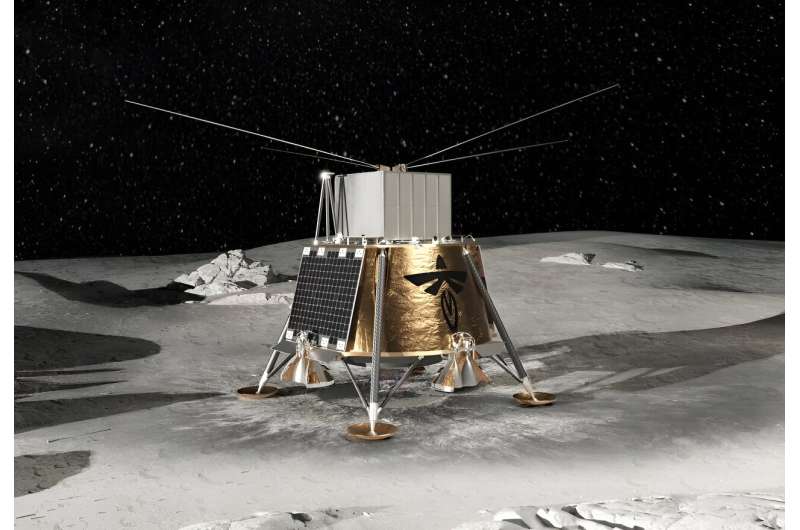
There are unexplored regions of the universe—and there are also unexplored times. In fact, there's a nearly 400-million-year gap in our universe's history that we've never seen: a time before stars known as the Dark Ages. To investigate that era, researchers want to pick up a particular radio signal that can't be measured from Earth.
The first step to listening for it is a pathfinder project known as the Lunar Surface Electromagnetics Experiment-Night, or LuSEE-Night. The experiment is slated to head to the moon in 2025, where it will test technology in the harsh lunar environment.
The project is a collaboration between NASA and the Department of Energy, with partners from Lawrence Berkeley National Laboratory (Berkeley Lab), Brookhaven National Laboratory (lead DOE lab), UC Berkeley, and the University of Minnesota.
Andreas Mogensen becomes International Space Station commander
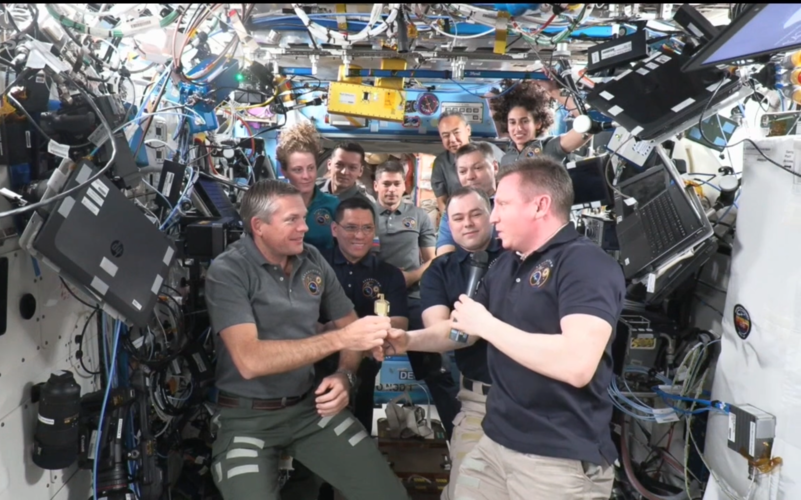 Video:
00:03:20
Video:
00:03:20
ESA astronaut Andreas Mogensen became commander of the International Space Station (ISS) on September 26, 2023, in a traditional ceremony in which the departing commander, Sergey Prokopyev, handed over the symbolic key of the Space Station. Mogensen is the sixth European to take on the role of ISS commander.
Mogensen will serve as commander for the rest of his Huginn mission until early 2024. During his command, he will be responsible for overseeing the crew's activities and ensuring the safety and operation of the Space Station.
Seeking Euclid's hidden stars: commissioning looks up
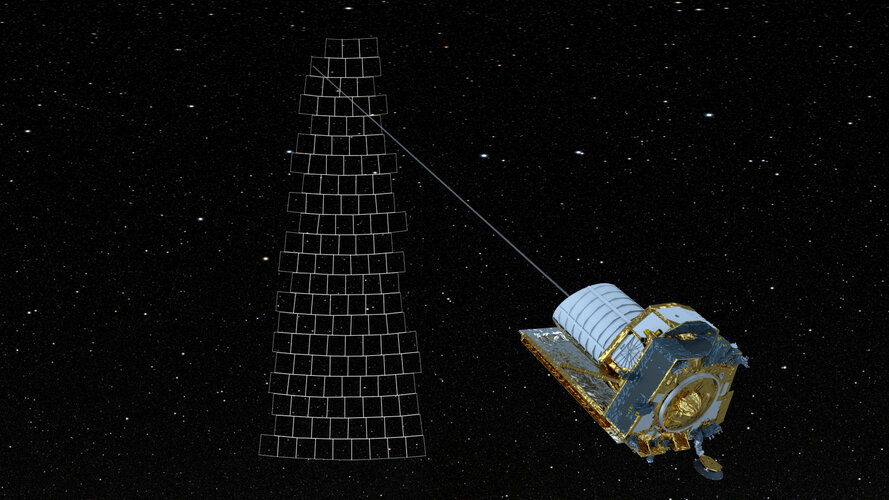
NASA's Interstellar Mapping and Acceleration Probe passes system integration review
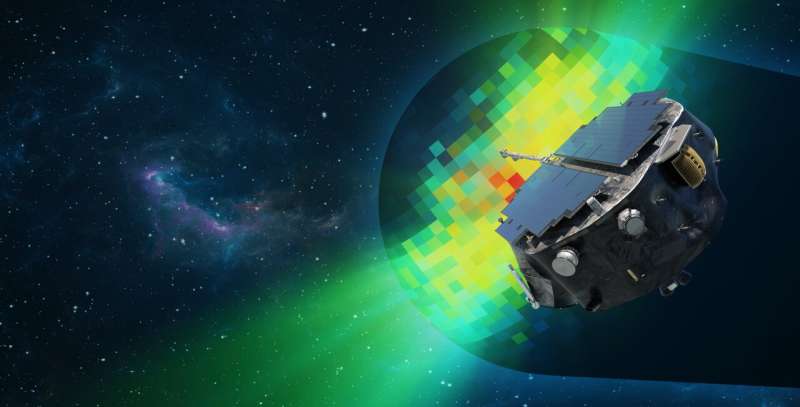
The Interstellar Mapping and Acceleration Probe (IMAP) marked the completion of an important step on the path to spacecraft assembly, test, and launch operations in late September 2023 at Johns Hopkins Applied Physics Laboratory (APL) in Maryland.
The IMAP team met with a review panel to evaluate the plan for integrating all systems onto the spacecraft, such as the scientific instrumentation, electrical and communication systems, and navigation systems.
Successful completion of this System Integration Review (SIR) means that the project can proceed with assembling and testing the spacecraft in preparation for launch. This process is a bit like a carefully choreographed dance where the instruments and support systems are delivered to different facilities, tested together in chambers in Los Alamos, New Mexico; San Antonio, Texas; and Princeton, New Jersey; and shipped back to be integrated and tested again altogether.
"Sombrero Rock": A Case of Case-Hardening?
 Mars never fails to provide us with interestingly-shaped rocks, and recent observations have been no exception. The rock seen in this sol 907 Mastcam-Z image has captured the hearts and minds of our science team: our hearts for its sombrero-like shape, and our minds for the potential science implications behind it.
"Sombrero rock" (officially named Middle Mountain) was found along our jour
Mars never fails to provide us with interestingly-shaped rocks, and recent observations have been no exception. The rock seen in this sol 907 Mastcam-Z image has captured the hearts and minds of our science team: our hearts for its sombrero-like shape, and our minds for the potential science implications behind it.
"Sombrero rock" (officially named Middle Mountain) was found along our jour 